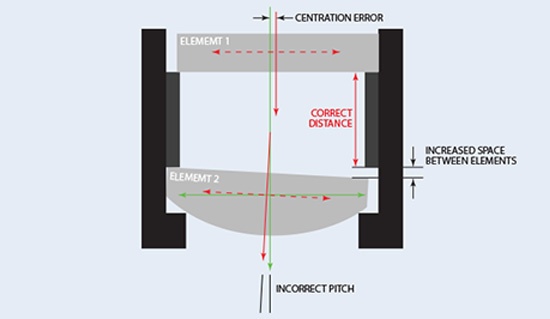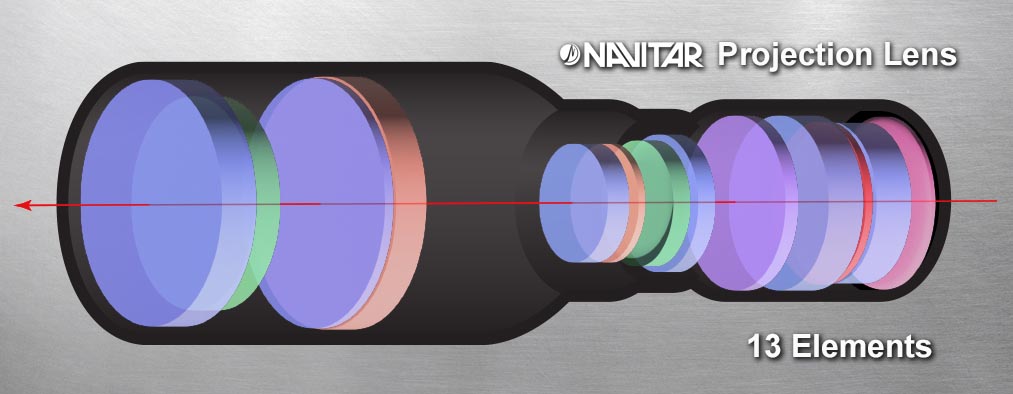Should a Lens Be Actively Aligned?
As modern devices continue to become smaller and more complicated, the need to view detail down to the micron is becoming increasingly necessary in manufacturing environments.
To achieve this, many manufacturers are utilizing machine vision with high resolution lenses. Depending on the application, these lenses provide greater magnification, higher resolution and in some cases auto focus functionality. These improved characteristics require greater lens complexity and the need for tighter tolerances when they are produced.
For a lens to perform as it was designed, each of the components have to be manufactured to exacting standards and when assembled, the position of each is critical to ensure proper function.
To better understand how fit can impact function lets consider a basic lens, which contains a housing, spacers and two or more glass elements. For this lens to perform optimally, the elements have to be aligned based on their optical axis and be parallel. Dimensional variation in the components can cause an improper fit, resulting in misalignment.
Example 1
Designed Fitment Without Dimensional Variation
This represents a basic lens consisting of a housing, spacers and two elements. If it were possible to produce components without variation, they would fit according to the design.

Example 2
Misalignment From Improper Fit
Though exaggerated, this illustration demonstrates how space between the elements and housing the elements can be in the wrong position or even tilted. The loss in image quality may not always be detectable.

For many low quality, mass produced lenses, the manufacturing process relies on Passive Alignment or the components ability to fit together based on their design. Assuming the elements are produced to specification, they are assembled without the ability to make adjustments. Slight deviations in a component’s dimensions will impact fit, cause misalignment and could result in with focus issues, distortion or other anomalies.
Since there is no ability to adjust the components during the assembly, the completed lens will require testing to determine if it performs within tolerances. Those that fail are rejected and result in waste and increased cost from scrapped product. Manufacturers of inferior lenses will likely tolerate more variation to maintain profitability.
Active Alignment Produces a Superior Lens
Active Alignment describes the process by which the elements of a lens can be adjusted into proper alignment during the assembly process. Some lenses, depending on their functionality can have a dozen or more elements, each with the ability to compromise the lens’ functionality. This is why Active Alignment plays such an important role in producing a superior lens.

While there are various methods to Actively Align a lens, it is performed based on the lens’ actual dimensions. The best way to determine the optical axis of a lens is by spinning it. If an element is off center it will wobble. This can be detected with an indicator that measures the elements diameter or a laser that will utilize the focal point of the elements radius. In either case centering is based on actual not planned dimensions.
As each element of a lens stack is added, fine adjustments will bring it into proper alignment. When the element is in an ideal position, adhesive is applied, securing the proper alignment. The process is then repeated for each subsequent element, allowing the technician to maintain centration. While this process can be time consuming it is essential for a high performance lens.
When performance is critical as with circuit board inspection or analyzing cell samples, failure to see critical detail can have significant consequences.
Learn more about Actively Aligned lenses.
